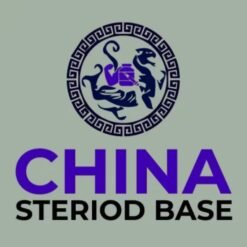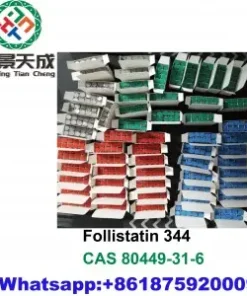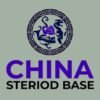Peptides Powder Follistatin 344 Injectable Anabolics Steroids for Anti-Aging CasNO.Follistatin 344
Appearance:White Powder
Specification:1mg/vial
Shipping Method:EMS, HKEMS, FEDEX, DHL, UPS, Aramex, ETC
Product Name:Follistatin 344
Storage Temp:Refrigerator
High Light:muscle building supplements, growth hormone peptides
Follistatin 344 Introduction
Follistatin is fascinating protein that can increase muscle mass beyond natural potential by suppressing myostatin. Scientists first identified follistatin while examining porcine (re: pig) follicular fluid in the ovaries.
Follistatin is naturally found in the skeletal muscle of almost all mammals with advanced or developed characteristics, such as humans, rodents, and cows. Follistatin is high in the non-essential amino acid cystine but unlike most proteins discussed in the fitness world, follistatin has carbohydrates attached to it.
Follistatin, specifically Follistatin 344 (FS344), quickly gained popularity in the bodybuilding community as a potential supplement to rapidly increase lean tissue mass. Another protein, follistatin-related gene (FLRG) acts on similar pathways as FS344 regarding its muscle building properties. Increased lean tissue mass could give a bodybuilder an advantage in a competitive setting and be the differentiating factor between first and second place.
Follistatin and Muscle Growth
Follistatin works by binding to and inhibiting transforming growth factor-β (TGF-β) peptides such as myostatin which is responsible for regulating and limiting muscle growth. It’s also worth pointing out that myostatin may have a regulatory role in skeletal muscle fibrosis; too much myostatin can impair tissue function and cause chronic disease in vital organs, tissues, and bone marrow.
In additional to suppressing the degenerative properties of myostatin, follistatin also suppresses the pituitary gland synthesis and secretion of follicle-stimulating hormone (FSH). High FSH levels in men may indicate that testicles are not functioning correctly; this condition limits muscle growth, recovery, and normal hormonal function. [6] However, FSH levels that are too low can also negatively impact health and reproductive capabilities.
Whereas some myostatin inhibitors like Trichostatin A (TSA) require daily administration, increased levels of FS344 were observed up to 15 months after initial injection. [7][3] The lack of need for daily administration makes follistatin an attractive alternative for suppressing myostatin.
The recent increase in attention in the science community on follistatin and other myostatin inhibitors is primarily due to the desire to find an alternative means to treat muscle disorders; the most popular current option is androgen steroids which pose a number of side-effects and long-term health risks. At this point you might be wondering why follistatin use isn’t more widespread in bodybuilders and other athletes. In the next section we will examine the current research on follistatin and whether it builds muscle mass.
Follistatin344 Application
Follistatin (FST) is a secreted glycoprotein that was first identified as a follicle stimulating hormone inhibiting substance in ovarian follicular fluid (1, 2). Human Follistatin cDNA encodes a 344 amino acid (aa) protein with a 29 aa signal sequence, an Nterminal atypical TGF binding domain, three Follistatin domains that contain EGFlike and kazallike motifs, and a highly acidic Cterminal tail. Follistatin is a secreted protein that binds to ligands of the TGF-Beta family and regulates their activity by inhibiting their access to signaling receptors. It was originally discovered as activin antagonists whose activity suppresses expression and secretion of the pituitary hormone FSH (follicle stimulating hormone). In addition to being a natural antagonist, follistatin can inhibit the activity of other TGF-Beta ligands including BMP-2, -4, -6, -7, Myostatin, GDF-11, and TGF-Beta1. Follistatin is expressed in the pituitary, ovaries, decidual cells of the endometrium, and in some other tissues. Recombinant human Follistatin is a 37.8 kDa protein containing 344 amino acids .






Reviews
There are no reviews yet.